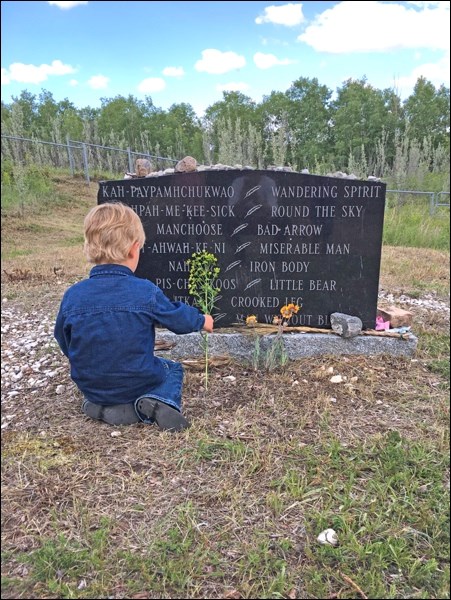Dear Editor
We were privileged to be in the Battlefords for National Indigenous Peoples Day this past Friday. There were some amazing historical moments there. We witnessed five chiefs and two mayors of the Battlefords area signing an agreement to co-operate together in fighting common enemies of poverty and addictions and racism. I hope to see the full document sometime soon posted and available to the public. I am committed to supporting the leaders in whatever way that I can as a citizen, to fulfill this agreement.
We also attended Fort Battleford where Indigenous people planned a full day of activities. We took in some of the storytelling where Eric Tootoosis told the other side of the story to the Battle of Cut Knife Hill. Very interesting. Everyone should have been there. I hope he gets invited to tell stories to groups all over the province.
We watched a very emotional raising of 12 flags: Treaty 6 flag and 11 First Nations and Métis flags over Fort Battleford. Then during the afternoon program, Eric Tootoosis told a few more stories about Indigenous people’s early interactions with cannons. At the Battle of Cut Knife Hill the natives mostly remained hidden where the cannon balls would fly far over their heads and miss them entirely. They would shoot arrows at the soldiers working to fire the cannon, not to kill, but to complicate their efforts. Then many of the native warriors grouped together in an open place where the army could see them. The soldiers rushed over, leaving the cannon unattended. While the army was thoroughly distracted by the large group, a few braves snuck over to the cannon and filled it with sticky pitch. When the soldiers returned to the cannon, it blew up and was rendered useless. The general knew then that he would not win that battle against the natives and called a retreat. The stories were a very entertaining and an educational introduction to the firing of the cannon.
After the festivities had closed for the day, I wanted to take my children to pay respects at the grave of the fallen warriors. I asked a Parks Canada worker at the front desk how to find it. With her directions, we were able to locate it after some wandering about in tick-filled bush. We read the information there at the marker and remembered some of the story that Eric Tootoosis had told at the Fort. The elders at Poundmaker have known all these years that Wandering Spirit, whose name is on the tombstone, is not actually buried there. When the RCMP were searching for the eight braves, Wandering Spirit’s brother-in-law said that he would take his place because he had nothing to live for and Wandering Spirit had a family that needed him. So they exchanged clothing and Wandering Spirit’s brother-in-law gave himself up to the RCMP and pled guilty to the charges. He was hung in his place and buried with the other seven warriors. Wandering Spirit fled the country and was later buried in Montana where he lived. The Poundmaker elders had been afraid to tell this part of the story publicly until this year.
After paying our respects, we were leaving the gravesite when my five-year-old son grabbed a goldenrod growing nearby and ran back to put it at the tombstone. I snapped a photo of him kneeling there: a white-blonde descendent of white-privileged, racist German settlers, paying respects to eight braves who were hanged by a white-privileged, racist, unjustice system in a colonial society.
While the history of this area is dark with many wrongs against Indigenous Peoples. But we can repent of those wrongs, make restitution for them, and raise and educate the next generation to engage in full reconciliation to ensure that these wrongs are not repeated. Who will join me?
Rose Rogers
Battleford



